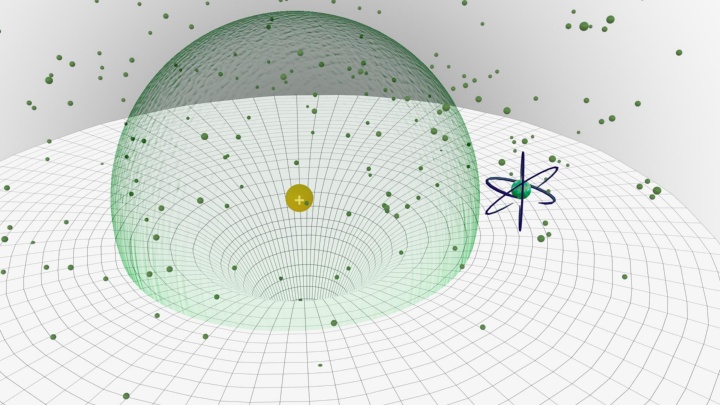In their experiments, the experimental physicists utilised the properties of Rydberg atoms. In Rydberg atoms, the outermost electron is located in a highly excited and spatially extended orbit. The extreme sensitivity of this electron turns the atomic giants into true loners, which can only be produced simultaneously if they are far enough apart. This so-called Rydberg blockade is currently an important building block for the realisation of quantum simulators. Rydberg atoms react even more sensitively when a charged ion is in their immediate vicinity. The resulting ion-induced Rydberg blockade has now been observed for the first time in the Stuttgart experiment.
“We generate our ion directly from an ultracold gas cloud using a sequence of laser pulses,” explains Felix Engel, PhD student at the 5th Institute of Physics, adding: “This means that the ion is very slow immediately after it is generated. We have now been able to guide it very precisely away from the place where it was generated using the smallest electric fields.” In the experiment, the researchers used another laser pulse to investigate whether it was possible to transfer another atom from the gas cloud into a Rydberg state at the ion's point of generation. Only when the ion was far enough away did they succeed in creating the Rydberg atom. This made it possible to precisely measure that the Rydberg atom interacts with the ion even over a distance of more than 20 μm and thus serves as a sensor for its location.
The team plans to use the observed ion-induced Rydberg blockade in future experiments to study the transport dynamics of individual ions through quantum matter, such as a Bose-Einstein condensate. In addition, the underlying interaction could also be used to control chemical reactions of ions in ultracold gases.
Original publication
Observation of Rydberg Blockade Induced by a Single Ion,
F. Engel, T. Dieterle, T. Schmid, C. Tomschitz, C. Veit, N. Zuber, R. Löw, T. Pfau, and F. Meinert
Phys. Rev. Lett. 121, 193401(2018) (link to PRL)



